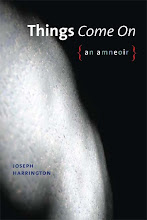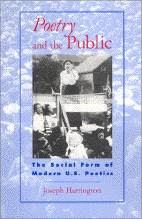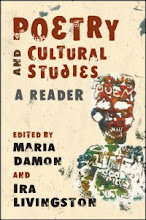Is it just my imagination, or is the Rejection Slip an institution that is going by the boards? There are journals who send them out, of course – and some of them are e-slips. With those automated submission systems, one wonders if one’s work isn’t being evaluated by a computer. But at least you get a response from the machine.
Back in The Day, I don’t recall as many editors just blowing one off. Nowadays, you can query after six months, not get any response, and then wait another year, and never receive a rejection slip. Or get an acceptance after two years – never having heard a peep in the interim! (true story)
How come the lack of rejection slips? Well, Carol Novak at Mad Hatters Review is gracious enough to explain (in paradigmatic Carol N. fashion):
“. . . we hate sending rejection emails and refuse to do so. So please -- if
you haven't heard from us within 120 days of your submission, presume
that ‘while we enjoyed your submission, it didn't suit our current
needs.’ This has got to be the dumbest, most over-used rejection letter
language both of us editors and you have had the misfortune to read.
Lots of chi-chi journals send out letters like that. We've surmised that
lots of chi-chi editors lack imagination.”
So, in some cases, it may be a rejection of the rejection slip as a genre. In other cases, it may just be that the crush of submissions are simply overwhelming, and the editors give up trying to respond to all of them. With 10-50K publishing poets in the US alone, who can blame them??
In other cases, the editors may simply be too cool to interact with the creators of work they disdain. I suspect that may have been the case with Narrativity – which prompted this hilarious and brilliant piece by Paul VanDeCarr - which they couldn't help but publish.
And thank heavens for journals like Abraham Lincoln, which promises to laugh at unsolicited submissions. That’s incredibly refreshing – like a post-dated rejection slip, first thing in the mornin’!
Anyway, I’d be interested in other people’s experiences, rejection-slip-wise, in recent years. Is the silent “Whatever” replacing the written response to submissions?
from Startles
-
Startles
Upside down tee shirts hang on the line under an overhang, dripping from
the head space below. Half moon on white shirt or window whose tra...
3 days ago











4 comments:
I have avoided not receiving a rejection slip by looking at the table of contents for that issue of Narrativity. To me, that table of contents is a rejection slip all on it's own. Christian Bök's name in a table of contents is a rejection slip to lil' ol' me. (I never understood the placement of the apostrophe in "lil'"--shouldn't it be "li'l'"?) When I think "Fence Magazine submission" those words are almost instantly replaced in my mind with the words "rejection slip central."
One of the best rejections ever was in the old print edition of Exquisite Corpse Magazine, Co-edited by Andrie Codrescu and Laura Rothenthal and it's famous Body Bag Column that co-editor Rothenthal published. Rejects were listed by name under various headings, if memory serves, from Not Quite This Time to Never Ever Send Anything to Us Again...or some such. It was funny and entertaining to read her comments and sometimes see under what heading you and your submission fell that issue. The really awful stuff was subject to her 'close reading'...before being booted from here to there. Ouch!!!!!
Her comments were always really smart, funny and biting...meeting the requirments for us cynics in the readership.
I was lucky to get published a few times and only ended up in the Try Again bag once or twice.
Am I the only person who thinks it's rude not to give some signal that the (unstatededly) rejected poem is free to go to some (presumably lesser) venue that will publish such drivel? Public statements (after 100 days consider yourself condemned; do not invite yourself to our party) are fine. But Nothing is just plain rude.
The best rejection letters offer encouraging or constructive feedback. Short of that, I prefer a short, polite note like the one the New Yorker sends (which is a little 4 X 6 note, on nice paper, and very frameable).
Then there are the publications that don't bother replying. In 2008, I sent some submissions to The Village Voice and a number of their affiliated weeklies. Not a single one replied.
The worst letter I ever received was a full-page form rejection letter from a youngish editor that read like a pep talk, about how important it was to be happy with your own work no matter what the editors say, etc. I would have preferred a short, sweet rejection.
Post a Comment